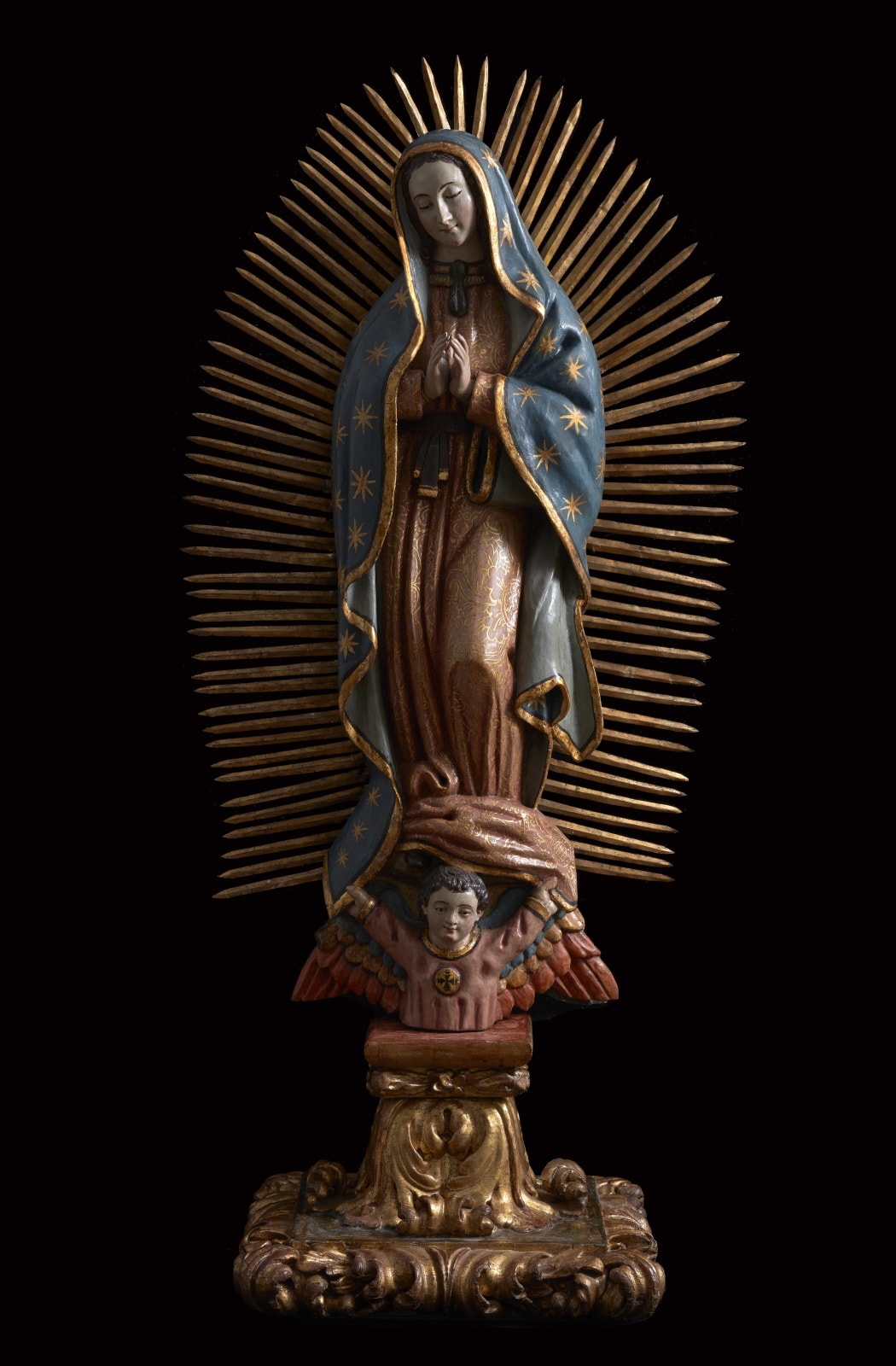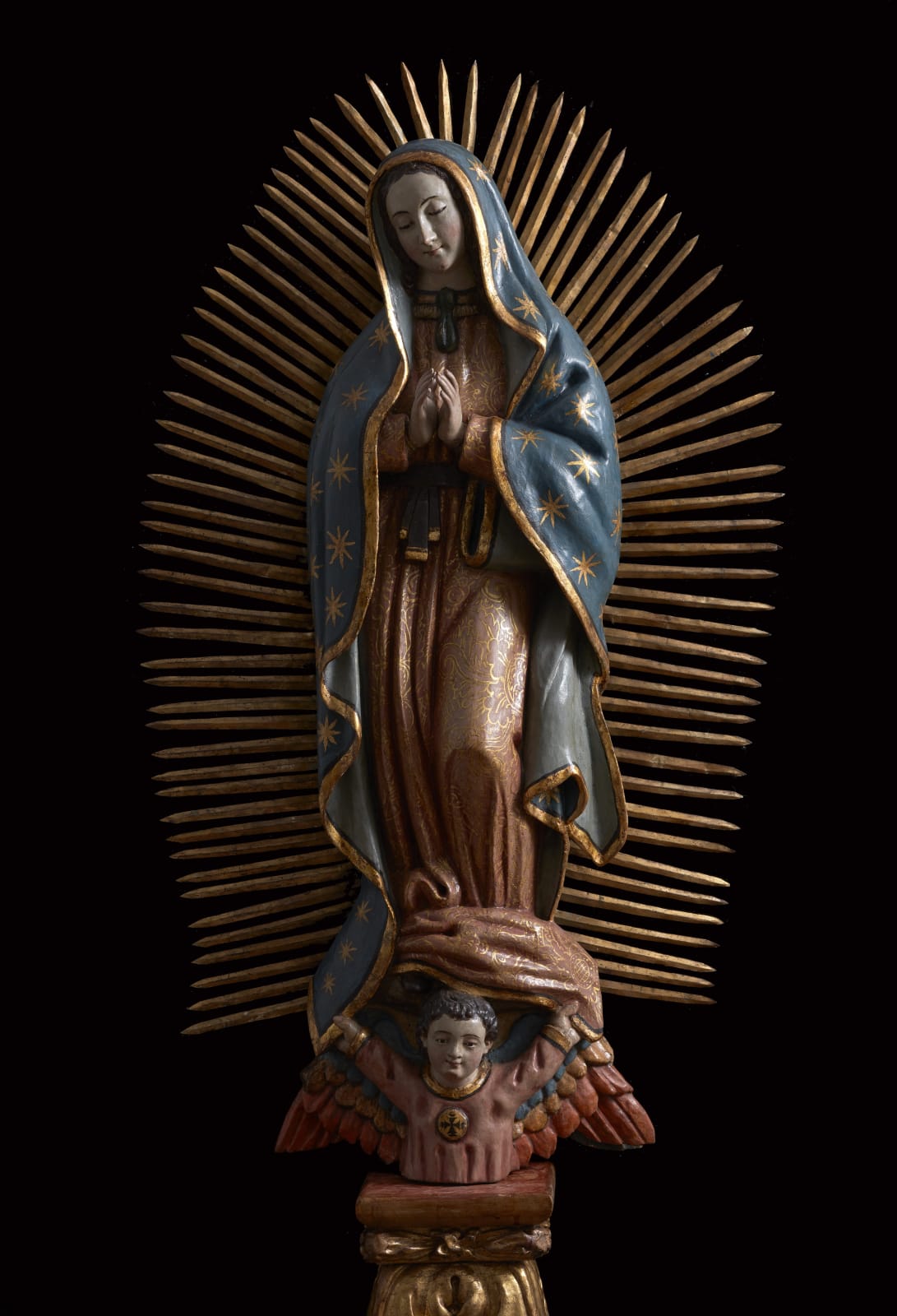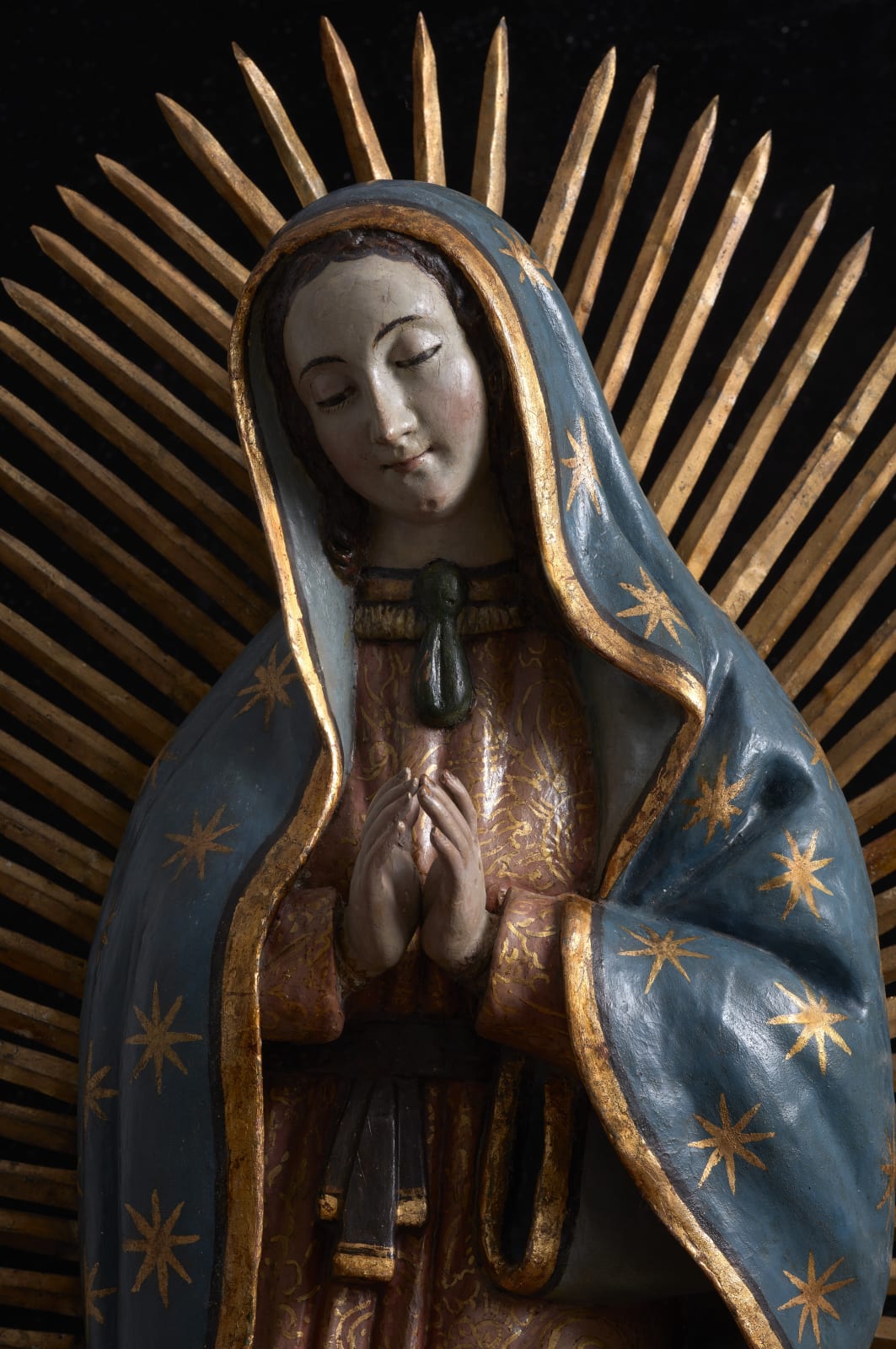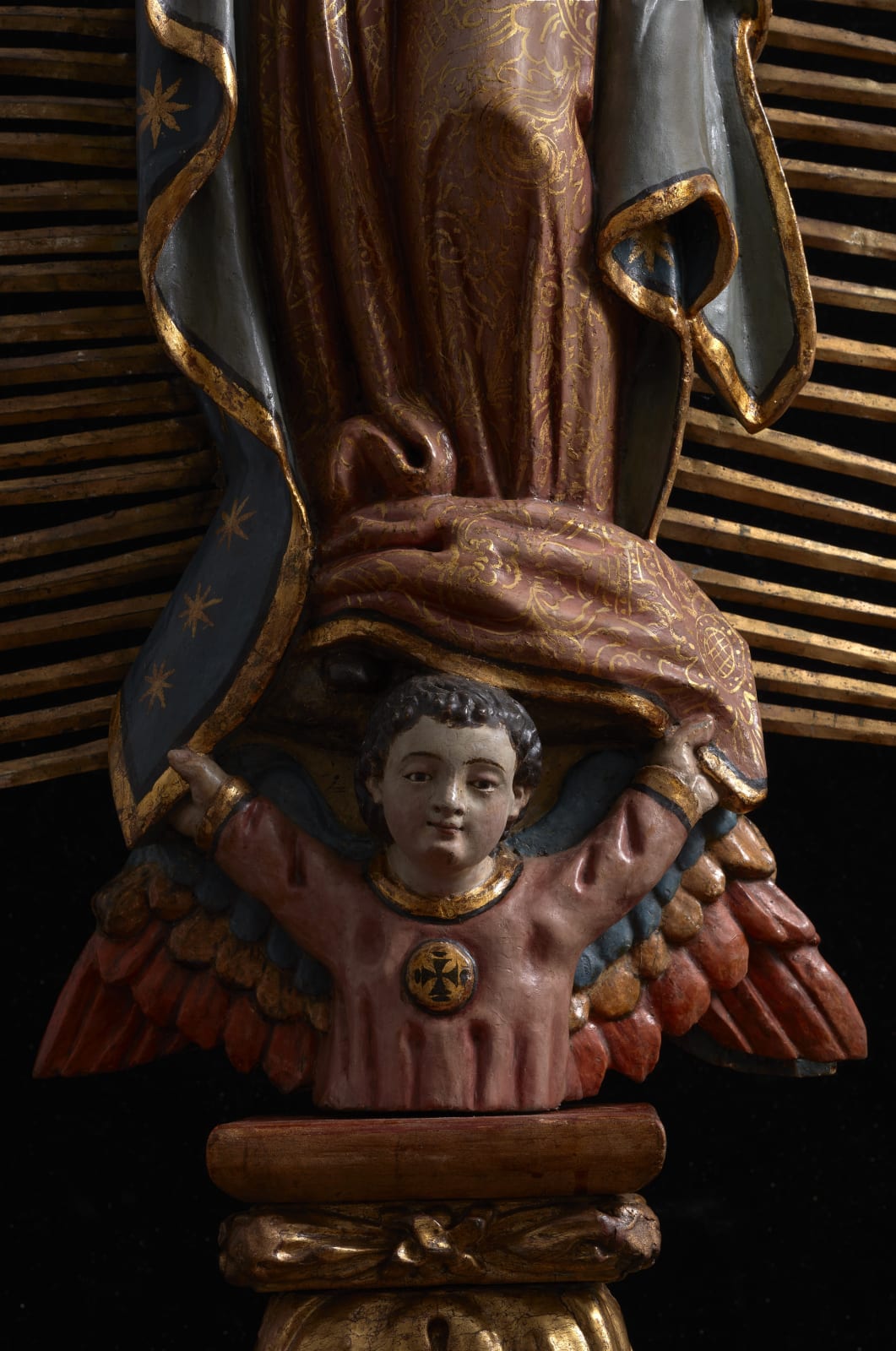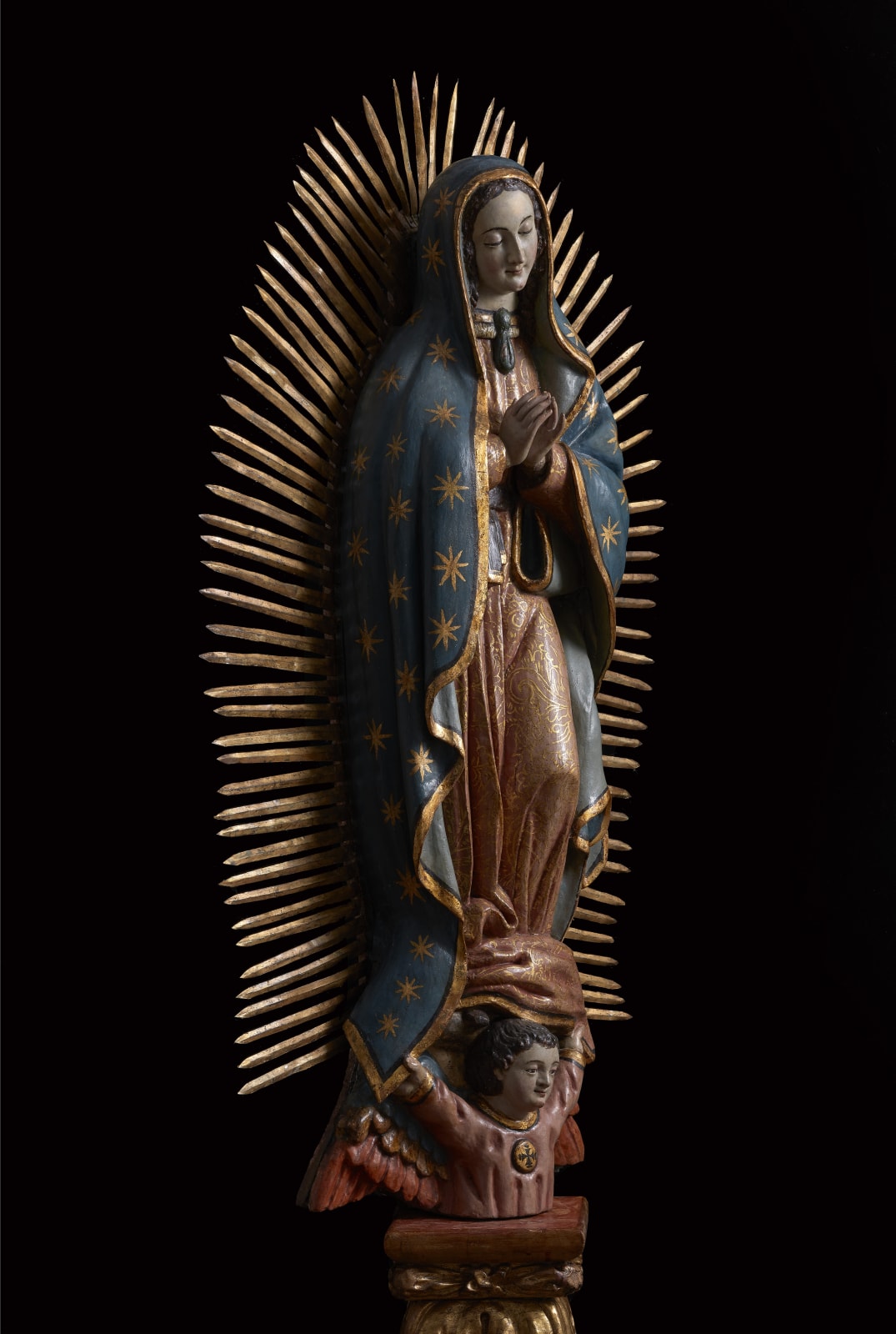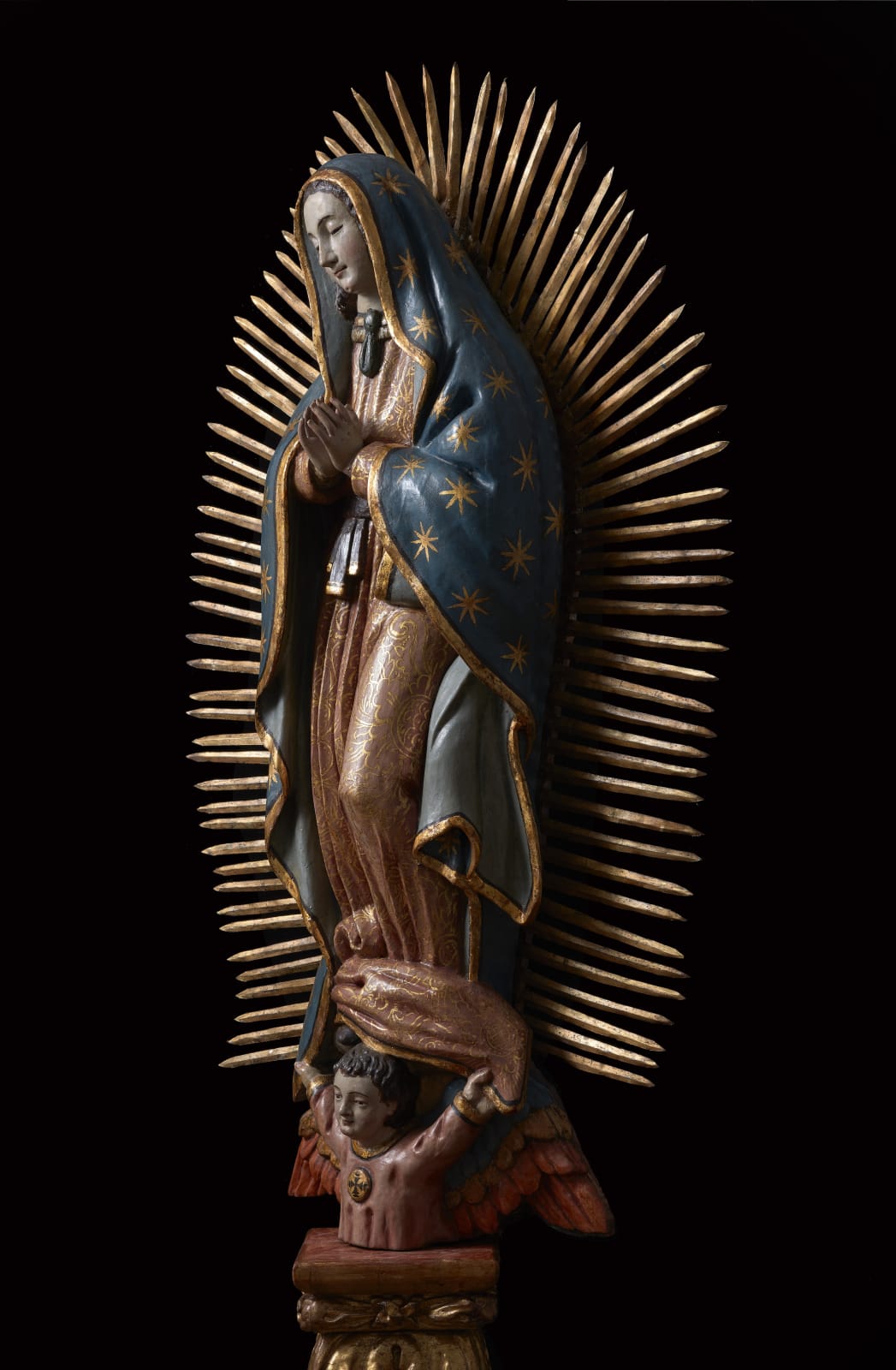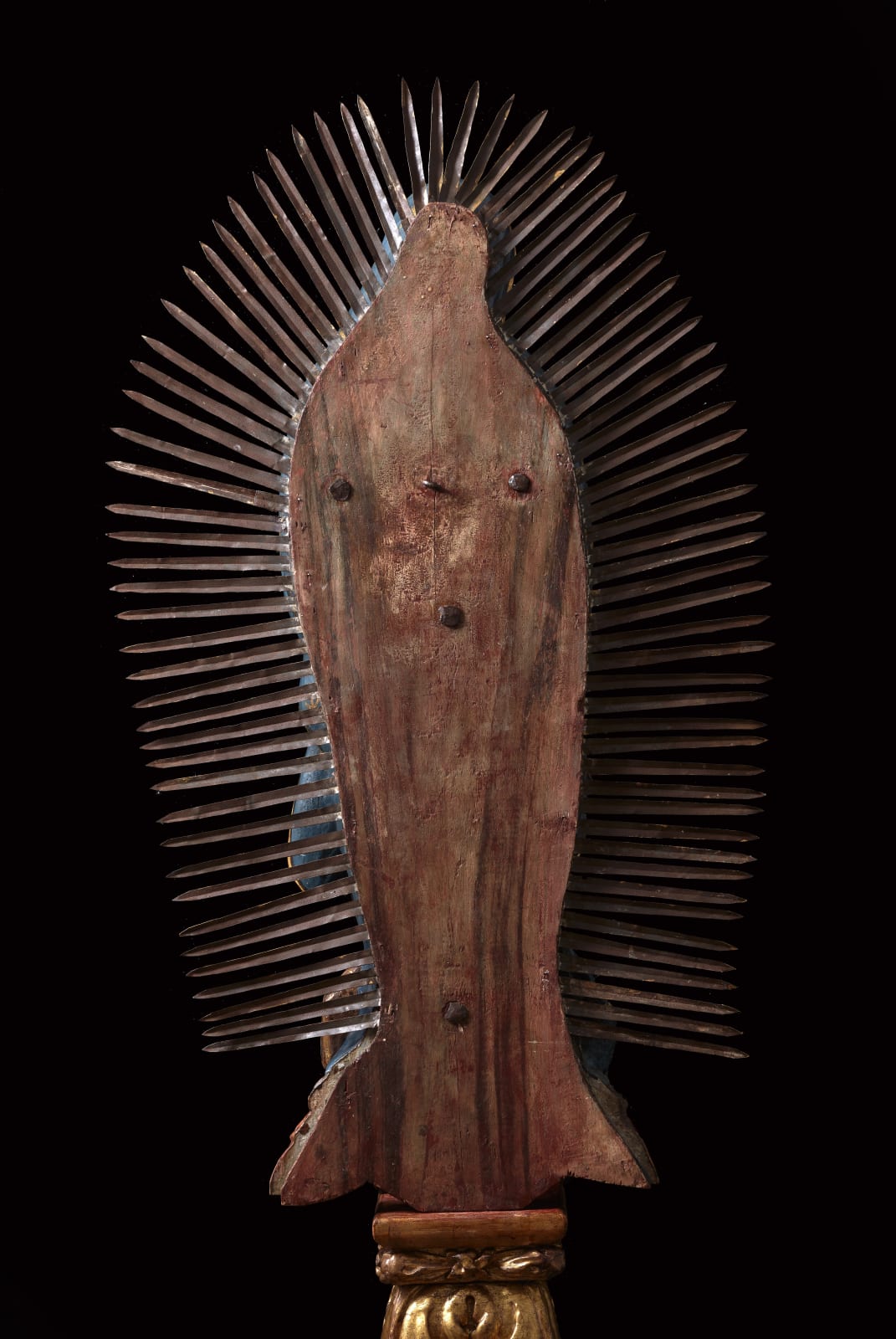OUR LADY OF GUADALUPE
Height with base 149 cm
Further images
Provenance
Private collection, Spain
The image of Our Lady of Guadalupe originates from New Spain (Mexico), and relates to the apparition of the Virgin Mary in the Viceregal region, this being the most venerated iconography in the entire Marian repertory on New Spanish soil. The story, known as Nican Mopohua (Here is recounted), is a hagiographic text written in Nahuatl by Antonio Valeriano in about 1556, and it describes the various occasions on which the Virgin appeared to the indigenous native Juan Diego on Tepeyac hill in 1531. It was subsequently published in 1649 by the priest Luis Lasso de la Vega (1605–1660) in his book Huei Tlamahuizoltica (Fig. 1). When Juan Diego went to see the first bishop of Mexico, Juan de Zumárraga, as the Virgin had requested, and asked him to build a temple in her name, the bishop asked him for some evidence proving what he claimed to have seen. On Mary's final apparition, Juan Diego took her roses, and the image of the Virgin was imprinted on his tilma, or cloak, thereby serving as undeniable proof lending credibility to his vision.'
Both pictorial and sculptural depictions of Our Lady of Guadalupe are based on the image she left on Juan Diego's cloak. This original image provides testimony of the miraculous episode, and was portrayed by innumerable artists in the Viceroyalty over the centuries."
The magnificent sculptural image of Our Lady of Guadalupe we present here stands on a four-sided pedestal made of carved gilt wood, with phytomorphic motifs. On top of this base, the beautiful Virgin rises up, tall and majestic, in accordance with the iconography left on the miraculous cloak. She is depicted full length, standing with her hands clasped together in prayer, her left knee slightly bent, a movement reflected in the arrangement of her robe, which is somewhat twisted. Her beautiful face presents indigenous features with porcelain-like skin matching that of her slender and delicate hands, the latter joined together in an act of prayer over the middle of her breast. Her dark, straight hair with its center parting falls closely down on both sides of her head, covered by the cloak that points to her virginity. Her head is slightly tilted to the right in a generous and humble gesture and sign of reverence and respect, while her eyes gaze downwards tenderly. Her head and shoulders are covered by a blue cloak adorned with stars executed in gold leaf. The robe covering her body is a pink color representing the earth. It is decorated with floral motifs executed in extremely fine estofado work, representing the nine pilgrim tribes that arrived from Aztán to populate the valley according to the 1576 Aubin Codex. Her robe is closed at the neck, and has vertical folds, ruffling up towards the bottom where the fabric is seen to overflow. The bow of her belt is an indication of her maternity. This type of belt was used by noble indigenous pregnant women, secured using a black band above the waist, leaving the belly free.
